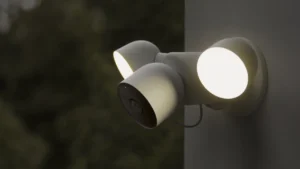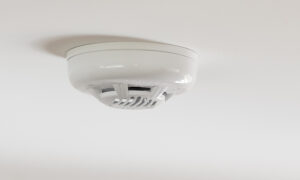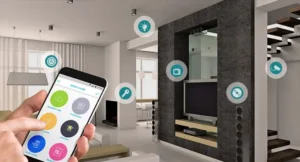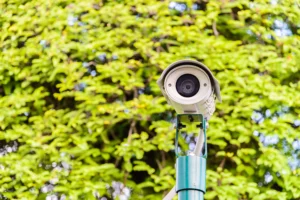Home security systems have become increasingly important in recent years as the rate of burglaries and home invasions continues to rise. The state of California has been grappling with high crime rates for several years now. According to the latest crime statistics from the FBI, California is among the states with the highest crime rates in the country. While many areas within the state have seen increased crime rates in recent years, three cities, in particular, have gained notoriety for their high crime levels: Oakland, Stockton, and San Bernardino. These cities have struggled with high violent crime rates, including homicides, assaults, and robberies.
According to the FBI, Oakland’s crime rate is more than three times the national average, making it a concerning place to live. In 2019, there were 10,559 reported property crimes in the city and 75 homicides. San Bernardino city has a crime rate of 1,298 per 100,000 residents, with many property and violent crimes. In 2019, 6,890 property crimes were reported in the city, along with 47 homicides. The high crime rates in these cities make them among the most dangerous cities to live in California.
But with the rise of smart home technology, homeowners now have more options than ever when securing their homes. Home security systems typically consist of security cameras, alarms, and monitoring services that work together to protect your home from break-ins and other threats. With the right system, you can rest assured that your home is secure, even when you’re not there.
While many pre-built security systems for homes are available on the market, building your own system is also an option that offers several benefits. This article will examine some of the pros and cons of building your system and some key components you’ll need to get started.
Pros And Cons Of Building an Integrated Home Security System
Pros
1. Cost Savings:
By selecting and purchasing individual components, building a home security system can be cost-effective for protecting your home. You can save money by avoiding the package deals offered by most companies.
2. Customization And Flexibility:
One of the most significant benefits of building your home security system is the ability to customize it according to your needs. You can choose the components that are most important to you and modify the system as needed.
3. In-Depth Knowledge Of The System:
Building your home security system will give you a thorough understanding of how it works, which can help troubleshoot any issues.
Cons
1. Time-Consuming:
Installing your security system yourself can be a time-consuming process. You must research the individual components, purchase them, and install them yourself. This can be time-consuming and require more effort than purchasing a pre-built system.
2. Lack Of Professional Support:
Purchasing a pre-built system will require professional support. It means that you will be responsible for installing, configuring, and troubleshooting any issues that may arise.
3. Potential For Errors:
Building your home security system can lead to errors if you are not experienced. This can result in a system that needs to be fully functional or meet your security needs. However, many manufacturers provide detailed instructions and tutorials to help you install and configure the system properly.
Key Components of a Home Security System
Security Cameras
1. Types Of Cameras
Regarding security cameras, you have a few different options. Dome cameras are popular because they are discreet, while bullet cameras are more visible and can act as deterrents. PTZ cameras offer more flexibility because they can pan, tilt, and zoom.
2. Camera Placement
Where you place your security cameras is crucial. You want to make sure that all entry points are covered, as well as any blind spots in your yard. It’s also important to place cameras in areas where they will be protected.
3. Image Resolution
The higher the image resolution of your cameras, the more precise the footage will be. It is essential to identify potential intruders.
Alarm Systems
1. Types Of Alarms
There are two types of alarms that you can install in your home: wired and wireless. Wired alarms are more reliable, but they can be challenging to install. Wireless alarms are easier to install but more vulnerable to hacking.
2. Siren Volume And Tone
The siren of your alarm system needs to be loud enough to alert you and your neighbors of a potential break-in. The siren’s tone should also be distinctive to help differentiate it from other sounds.
3. Monitoring Options
You can monitor your alarm system or scan it by a security company. Having it monitored by a security company can provide an extra level of security, as they can alert the police in the event of a break-in.
Smart Home Integration
1. Benefits Of Integration
Integrating your security system with other smart devices can provide additional benefits. For example, you can set your security cameras to turn on when smart thermostat detects that you are not home. You can also receive alerts on your phone when the security system detects movement.
2. Compatibility Issues
It is vital to ensure that your security is compatible with other devices. This can be challenging if you are using devices from different manufacturers.
3. Additional Costs
Security systems integration with other smart devices can be expensive. You will need to purchase the individual components and pay for any monthly monitoring fees.
Steps To Build Your Own Integrated Home Security System
1. Assess Your Security Needs
The first step to building your home security system is to assess your security needs. You should identify the areas of your home that are most vulnerable and the types of threats you are most concerned about. It will help in determining the types of components that you need.
2. Necessary Components
Once you have assessed your security needs, you can choose and purchase the necessary components. You must go for a security camera or cameras, an alarm system, and any smart devices you want to integrate.
3. Install And Configure The System
The installation and configuration process will depend on the specific components that you have chosen. Following the instructions carefully is important to ensure everything is installed correctly. Hiring a professional to help you may be worth it if you are uncomfortable with the installation process.
4. Test The System And Troubleshoot Any Issues
Once your home security system is installed, testing it to ensure everything works properly is important. This includes testing the security cameras, alarm system, and any devices you have integrated. If you encounter any issues, it’s important to troubleshoot them as soon as possible.
Conclusion
Building your home security system can be a cost-effective and customizable option for protecting your home. However, it has potential drawbacks, including the time and effort required to install and configure the system. When building your security system, it’s important to assess your security needs, choose and purchase the necessary components, install and configure the system, and test and troubleshoot any issues. Following these steps, you can build a security system for your home to meet your unique needs and provides peace of mind. Additionally, with the integration of smart devices such as Google Nest Cameras and smart thermostats, home security systems are becoming more advanced and personalized to each homeowner.








